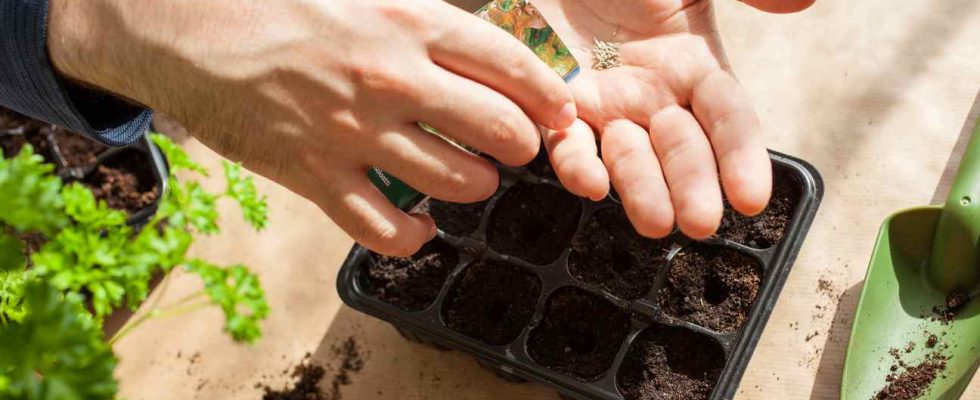
Geranium
For beautiful flowering planters from spring, you can plant geranium seedlings indoors from January onwards, until mid-March. To do this :
- Prepare a mixture of soil and seedling compost.
- Proceed with light sowing of geranium seeds.
- Then carry out rain watering.
- It is then important to install your seedlings in a bright location where the temperature is between 18 and 22°C.
- As soon as you have 3 or 4 leaves, you can transplant the seedlings into pots.
- When the risk of frost has passed, you can take them out.
Geranium is a plant that requires little maintenance and is easy to grow.
Begonia
It is also necessary to sow begonias very early in the season, in January until early February. As the days are still short, it may be necessary to use lighting to ensure germination and good growth. Here is how to sow your begonias:
- Fill a pot or tray with seedling soil.
- Moisten the potting soil well, but without soaking it.
- Place your seeds on the potting soil, then apply light pressure with a board to press them in slightly. Do not cover the seeds, as they need light to germinate.
- It is advisable to install the tray or pot in a mini greenhouse. This will maintain a temperature above 21°C day and night.
- When leaves have appeared and are strong enough, you can remove the dome.
- You can then put your seedlings outside. It is important to only do this gradually when nighttime temperatures exceed 10°C.
Coleus
With its velvety and colorful foliage, whether plain, variegated or multi-colored, coleus seduces and is a must-have for gardens or planters. You can sowing coleus throughout the year, including in January, under cover. To do this :
- Fill a container with seedling soil enriched with a little compost, at a ratio of two thirds potting soil to one third compost.
- Sow the seeds broadcast on the surface of your container. Be careful not to cover the seeds, as they need light to germinate.
- Then carry out watering in fine rain, then, over time, you will have to ensure that you always keep the substrate moist, but not soggy.
- Install your bin in a bright place where the temperature remains between 20 and 25°C.
- Emergence takes place between 10 and 20 days later.
- Once the last frosts have passed, you can start taking out your young plants. But don’t do it suddenly, remember to acclimatize them gradually.
Lobelia
Growing this annual plant is a little tricky, but with a little anticipation you will enjoy its beautiful blooms. Lobelias generally need to be sown from February onwards, but you can do so from January in the warmth. Here’s how to do it:
- In buckets, rather than a tray, put potting soil for seedlings.
- Then proceed to clear sowing. To do this, it is possible to mix the seeds with sand, as they are very small.
- Lightly cover the seeds with potting soil.
- Water in a fine rain, then pack lightly. You will then always have to take care to keep the substrate moist.
- It is possible to use a window to facilitate emergence, but it must be removed as soon as the seedlings appear.
- It will take between two and three weeks before the seeds emerge.
- As soon as frosts are no longer to be feared, you can finally proceed with the installation after having gradually acclimatized the seedlings.
Snapdragon
Also called snapdragon, this summer flowering plant can be sown from January until March. To do this, simply sow your seeds in a container under cover, then transplant in a pot when the plant begins to develop. You can install them in the ground in the spring.
Sweet Pea
You can sow annual sweet peas from January until March. To do this :
- Fill pots with seedling soil.
- In each cup, place 4 to 5 seeds per hole.
- Cover with a little potting soil, then tamp lightly.
- Carry out rain watering. Subsequently, it is important to always ensure that the soil is kept moist.
- Once the young plants are sufficiently vigorous, you can transplant them into fresh, well-drained soil, exposed to sun or partial shade. Remember to provide a support on which the plant can climb.

